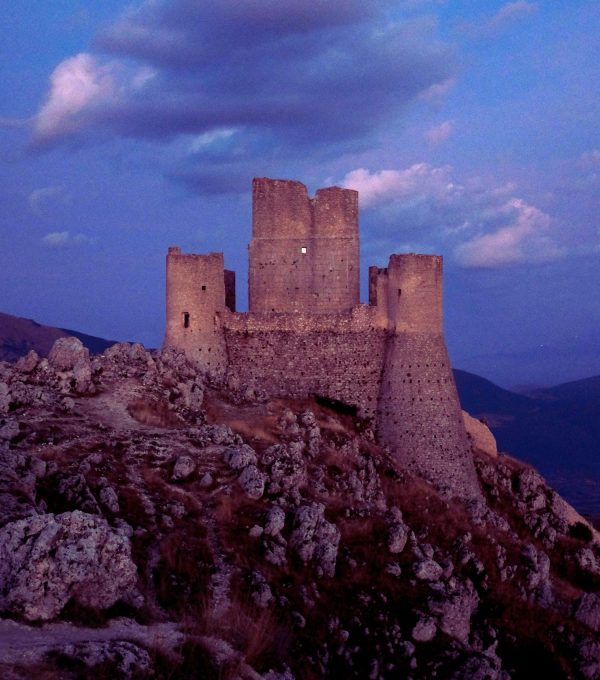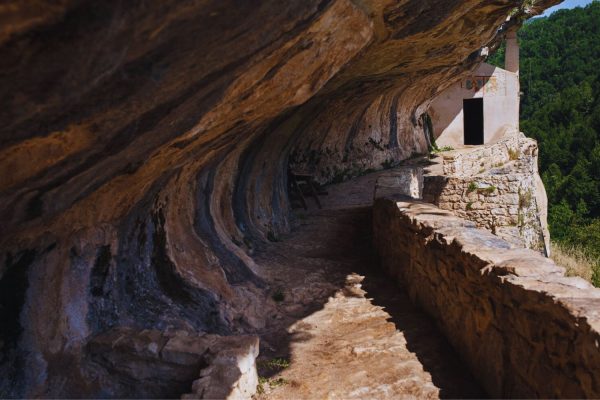Fountain of 99 pipes or Rivera, symbol of L’Aquila
The city of L’Aquila has a centuries-old history that has shown why it is a symbol of resistance, strength and resilience. Today it is still wounded by the earthquake of 2009, whose damage is still visible today, but, despite this, its territory preserves an artistic, cultural and architectural heritage not indifferent, which contains numerous monuments and works of art that best express its character and personality. Among these, here is the Fountain of 99 pipes, also known as the Fountain of the Rivera, located in the area of the same name.
The Rivera corresponds to an ancient castle, the Acquili, from which the name of the city is said to derive. At the time of its foundation it was considered a strategic area, as it was abundant with water and numerous craft activities. And this is where the beautiful fountain stands.
The structure
The Fountain of 99 pipes is a real symbol of L’Aquila: it is composed of 93 stone masks and 6 single stones, from which water flows. According to tradition, the number of pipes corresponds to the symbolic number of squares and churches of the city and represent the 99 castles that, in the thirteenth century, contributed to the foundation of L’Aquila.
Not surprisingly, therefore, the Fountain of the Rivera has always been considered the work of art that most enhances and enhances the autonomous origins of the city, since the citizens decided to found it voluntarily as a free city.
According to the plaque placed on the source, the Fountain of 99 pipes was erected in 1272 to a design by Tancredus de Pentoma de Valva (Tancredi da Pentima), immediately after the foundation of the city supported by Charles I of Anjou. To him and his dynasty are, in fact, dedicated the lilies placed to crown the thirteenth-century epigraph.
Construction and restoration
The current appearance of the Rivera Fountain is the result of a long series of remakes and restorations that have occurred over the centuries. It is assumed that the initial design consisted of a single façade, the eastern one, shorter than the present one and slightly inflected in the center.
On the wall, therefore, there were only 15 masks, alternating between male, female and zoomorphic and all attributable to the same hand. Later, even if a little, would have been introduced the wall parameter in bichrome ashlars, while the addition of new masks would date back to the fourteenth century.
In any case, the decisive intervention was wanted by Margaret of Austria, daughter of Charles V, who entrusted the project of enlargement of the fountain to the architect Geronimo Pico Fonticulano: he is responsible for the addition of a second tank and the northern and southern sides, as well as the extension of the original front.
Thus transformed, the Fountain of 99 pipes became a sort of square used as a public wash house. Referring to the most recent date engraved on the commemorative plaque, it is possible to trace back to 1871 the addition of the 6 pipes without masks on the southern façade, probably to ensure that the total jets amounted to the legendary number 99.
Curiosities and legends
Myths, legends and mysteries surround the Fontana della Rivera. There are so many and it is worth knowing them for their connection with the territory and its tradition. A first story concerns the source of power that, according to legend, would have been kept secret to prevent one of the founding castles could claim ownership. For this reason, it is said that the designer was even executed to prevent him from revealing this secret.
Another curiosity is, instead, linked to one of the masks, in particular the one on the right corner of the source and depicting a man with a fish head. In practice, it would refer to a medieval folk tale known as the legend of Colapesce, in turn attributable to Frederick II of Swabia (to which many would prefer to attribute the foundation of the city). The myth of Colapesce is not purely L’Aquila, indeed, Benedetto Croce discovered a portrait in Naples, then reconnecting the identification of this character half man and half fish at the time of Charles I of Anjou. Consequently, the presence of a mask with Colapesce is more attributable to the Angevins and not to Frederick II.
Whether to admire its beauty, to listen to the legends related to it or simply to enjoy the extraordinary atmosphere in L’Aquila, visit the city and make a stop at the Fountain of 99 Pipes is one of the things you should definitely do at least once in your life.
After the earthquake of 2009, the fountain suffered some damage especially in the right front, which protrudes on the city walls. Thanks to the FAI (Fund for the Italian Environment) it was possible to proceed with the restoration, aimed at consolidating the structure of the work and cleaning the lining of both the tombstone and the tanks.
Since 2010 the Fontana della Rivera has been reopened to the public, which has allowed it to achieve two major goals: give new light to a monument of immeasurable historical importance and allow the city of L’Aquila to show its symbol par excellence to anyone who decides to visit it.
Copertina: Unsplah




